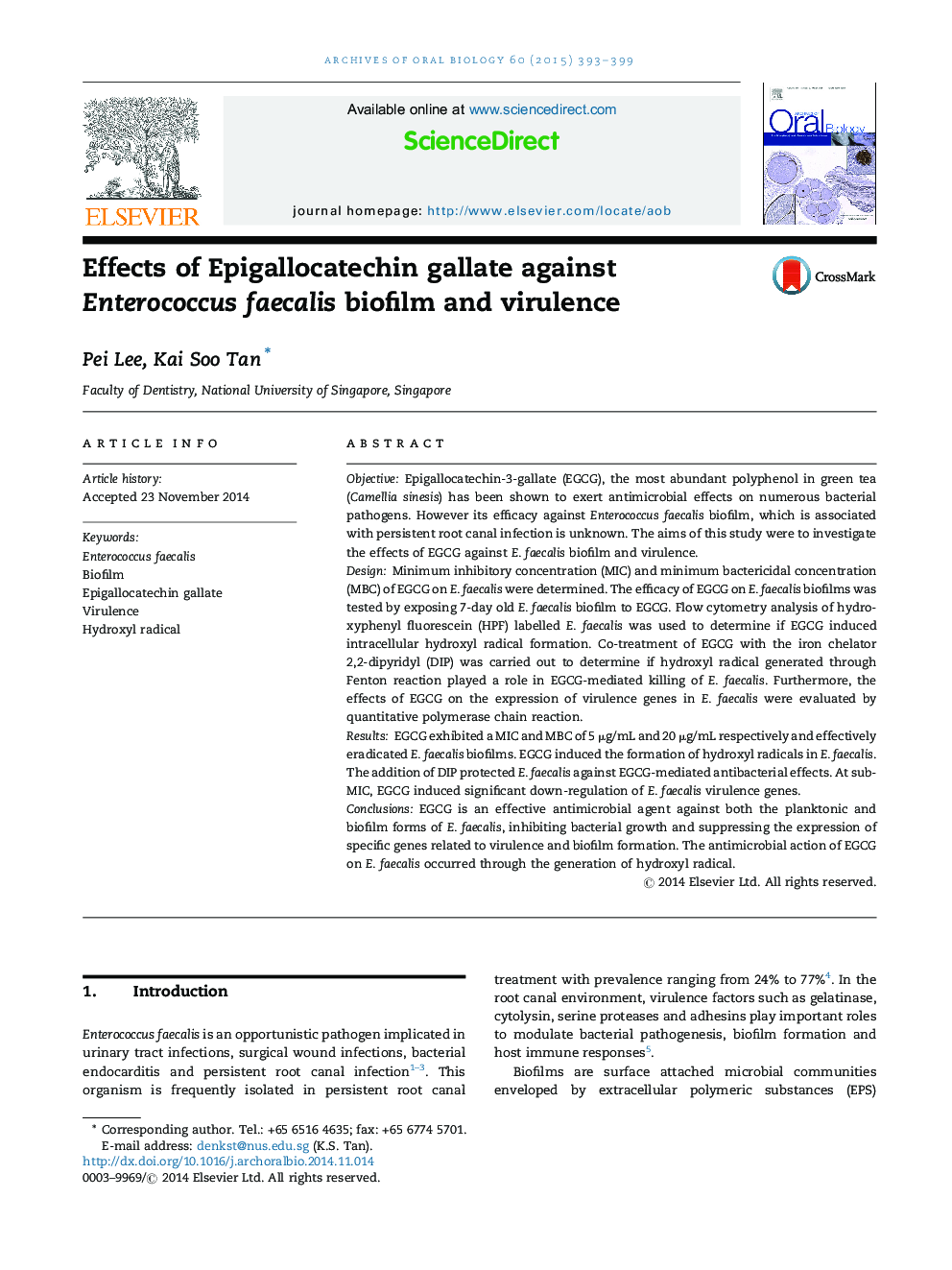| Article ID | Journal | Published Year | Pages | File Type |
|---|---|---|---|---|
| 3120804 | Archives of Oral Biology | 2015 | 7 Pages |
•EGCG eradicated E. faecalis growth and biofilm.•EGCG suppressed the expression of key virulence genes of E. faecalis.•Antimicrobial action of EGCG occurred through the generation of hydroxyl radical.
ObjectiveEpigallocatechin-3-gallate (EGCG), the most abundant polyphenol in green tea (Camellia sinesis) has been shown to exert antimicrobial effects on numerous bacterial pathogens. However its efficacy against Enterococcus faecalis biofilm, which is associated with persistent root canal infection is unknown. The aims of this study were to investigate the effects of EGCG against E. faecalis biofilm and virulence.DesignMinimum inhibitory concentration (MIC) and minimum bactericidal concentration (MBC) of EGCG on E. faecalis were determined. The efficacy of EGCG on E. faecalis biofilms was tested by exposing 7-day old E. faecalis biofilm to EGCG. Flow cytometry analysis of hydroxyphenyl fluorescein (HPF) labelled E. faecalis was used to determine if EGCG induced intracellular hydroxyl radical formation. Co-treatment of EGCG with the iron chelator 2,2-dipyridyl (DIP) was carried out to determine if hydroxyl radical generated through Fenton reaction played a role in EGCG-mediated killing of E. faecalis. Furthermore, the effects of EGCG on the expression of virulence genes in E. faecalis were evaluated by quantitative polymerase chain reaction.ResultsEGCG exhibited a MIC and MBC of 5 μg/mL and 20 μg/mL respectively and effectively eradicated E. faecalis biofilms. EGCG induced the formation of hydroxyl radicals in E. faecalis. The addition of DIP protected E. faecalis against EGCG-mediated antibacterial effects. At sub-MIC, EGCG induced significant down-regulation of E. faecalis virulence genes.ConclusionsEGCG is an effective antimicrobial agent against both the planktonic and biofilm forms of E. faecalis, inhibiting bacterial growth and suppressing the expression of specific genes related to virulence and biofilm formation. The antimicrobial action of EGCG on E. faecalis occurred through the generation of hydroxyl radical.
